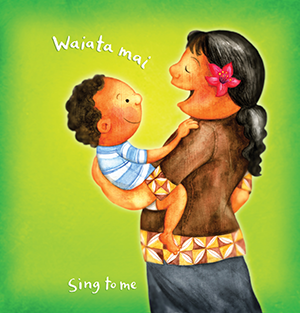
Fingerplay fun
Hands and fingers are the first things babies play with. Fingerplay is a game that pēpi can enjoy with their parents.
Hands and fingers can represent many things for pēpi. Some people describe them as a baby’s first toy. And some babies and young children can soothe themselves by thumb or finger sucking.
Adult hands can represent different things, too. They can be a symbol of love associated with positive experiences – security, warmth, care and nurture. On the downside, they can be used in negative ways to hit, slap, squeeze and punch.
They’re also the key tools for communicating in sign language.
Fingernail art is popular these days, and babies can take a great interest in decorated nails.
Ask whānau:
- What do you think your baby thinks of your hands? Do they associate anything with them?
- Do you know the song ‘Where is Thumbkin?’ or, in te reo Māori, ‘Kei hea kōnui?’
- Have you tried singing it with pēpi?
Try a fingerplay
This fingerplay uses hands and fingers in a playful way that a baby will enjoy. It provides a rich, multi-sensory experience. There’s repetition, rhythm and rhyme in the words. The simple actions help baby learn about things disappearing and returning.
Say:
- Shall we do it together? Don’t worry about how you sing. Baby will think you’re wonderful, just because you’re you.
- Start with both hands behind your back and sing:
- Where is Thumbkin? (Kei hea kōnui?)
- Where is Thumbkin? (Kei hea kōnui?)
- Bring the first hand to the front with thumb sticking up, followed by the other hand:
- Here I am (Kei konei).
- Here I am (Kei konei).
- Put both thumbs facing each other – like people talking to each other:
- How are you today? (Kei te pēhea koe?)
- Very well I thank you (Kei te pai āhau).
- Then one at a time, return your hands behind your back as you sing:
- Run away (E oma).
- Run away (E oma).
You can add more verses later: pointer, middleman, ringman and pinky — kōroa, māpere, mānawa and kōiti.












